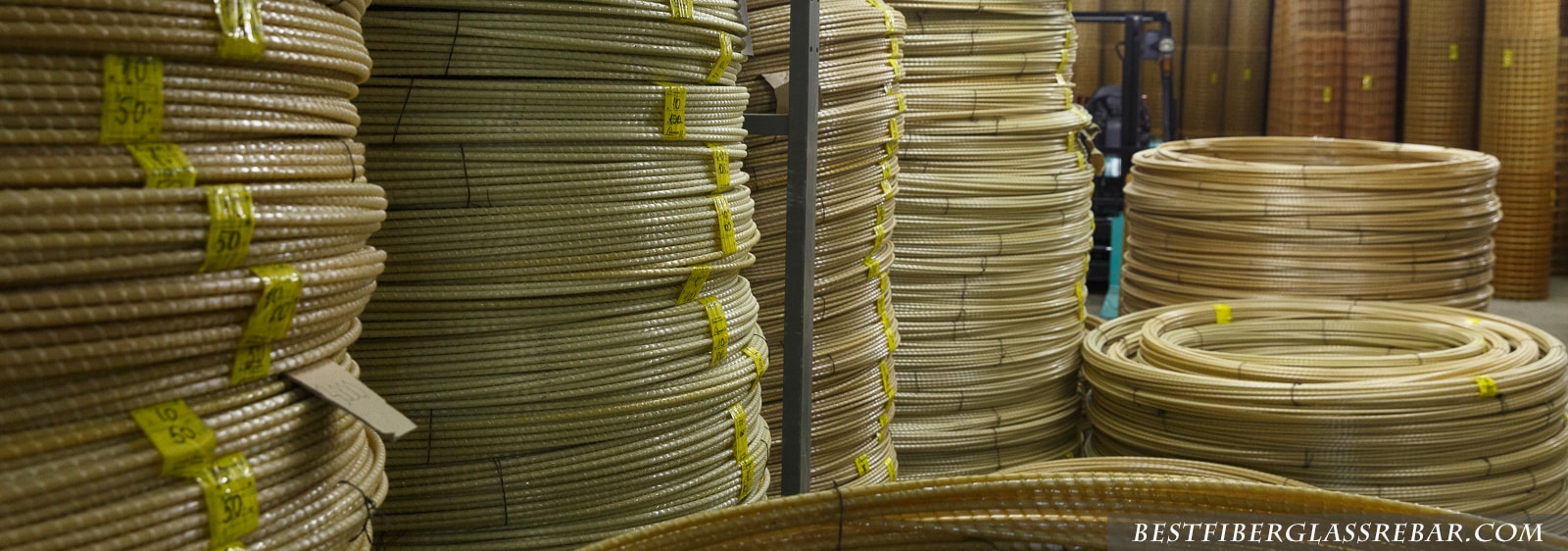Why shoose fiberglass rebar & mesh?
- Low weight. You get a composite rebar, which is 8 times lighter than steel one, which reduces the overall weight of the structure and the load on the foundation without losing strength.
- High tensile strength. You use a strong material for reinforcement, the tensile strength of which is 3 times higher than that of steel reinforcement.
- Save up to 50%. You significantly reduce the estimate, even if you change metal to fiberglass diameter to diameter. And taking into account an equally strong replacement of the reinforcement, the savings up to 50%.
- Save up to 90% on transportation. You save in delivery due to its light weight and small volume. The required volume for reinforcing the slab foundation of a medium-sized house of 3000 linear meters — fits into the trunk of a car.
- Flexible dimensions — bars of the required length The length of the composite armature is made in coils of 50 and 100 meters so you do not overpay for pruning metal rods, When reinforcing, you cut off the bar of the required length, and do not join the 11-meter iron whips. The weakest points of the reinforcing frame are the connections of metal rods together
- Energy Efficiency. As the cost of heating the building, reinforced with fiberglass, is lower than the steel reinforcement so you continue to save even during the management of the building.
- Longlife. You build for many years! Life of fiberglass reinforcement in the body of concrete(in contrast to steel analogues) is more than 100 years because of the high chemical and corrosion resistance of reinforcing composite materials.
- Radio transparency and dielectric properties. You use an armored frame from a dielectric that does not conduct electricity, and so you get an increase in radio transparency and reducing the influence of electromagnetic fields.
- Coefficient of expansion as in concrete. There is no imbalance in the reaction of concrete and composite reinforcement to cyclic temperature changes (unlike metal), so you avoid the cracks and internal stresses of the concrete structure.
- Easy installation. You simplify the process of cutting and mounting .A worker who has a minimal set of tools and forces can handle with a viscous reinforcement.
- Low thermal conductivity. The fiberglass reinforcement does not conduct heat (unlike steel), so you build a building without “cold bridges”. The problem of heat losses and freezing of walls, floors and foundations is especially urgent for the countries with a cold climate.
- Frost resistance. You buy high-tech material which does not lose its properties even in severe frosts. Temperature threshold of fiberglass reinforcement and mesh operation is -70 °С ~ + 200 °С.
Afrikaans
Albanian
Amharic
Arabic
Armenian
Azerbaijani
Basque
Bengali
Bosnian
Bulgarian
Catalan
Cebuano
Chichewa
Chinese (Simplified)
Chinese (Traditional)
Corsican
Croatian
Czech
Danish
Dutch
English
Estonian
Filipino
Finnish
French
Frisian
Galician
Georgian
German
Greek
Gujarati
Haitian Creole
Hausa
Hawaiian
Hebrew
Hindi
Hmong
Hungarian
Icelandic
Igbo
Indonesian
Irish
Italian
Japanese
Javanese
Kannada
Kazakh
Khmer
Korean
Kurdish (Kurmanji)
Kyrgyz
Lao
Latvian
Lithuanian
Luxembourgish
Macedonian
Malagasy
Malay
Malayalam
Maltese
Maori
Marathi
Mongolian
Myanmar (Burmese)
Nepali
Norwegian
Pashto
Persian
Polish
Portuguese
Punjabi
Romanian
Russian
Samoan
Scottish Gaelic
Sesotho
Shona
Sindhi
Sinhala
Slovak
Slovenian
Somali
Spanish
Sudanese
Swahili
Swedish
Tajik
Tamil
Telugu
Thai
Turkish
Ukrainian
Urdu
Uzbek
Vietnamese
Welsh
Xhosa
Yiddish
Yoruba
Zulu
